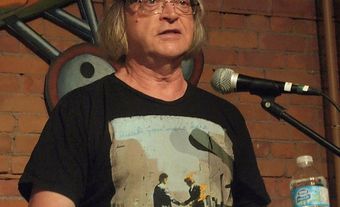Donald William Buchanan
Donald William Buchanan, (b at Lethbridge, Alta, 9 Apr 1908; d at Ottawa 28 Feb 1966). He was the son of Senator W.A. Buchanan, publisher of the Lethbridge Herald, and received a degree in modern history from University of Toronto as well as an Oxford fellowship. Serious illness caused severe hearing loss, which perhaps increased his interest in visual communication. In the 1930s, he was one of the founders of the Ottawa Times, a spirited weekly challenging staid cultural and political mores.
He played a key role in founding the NATIONAL FILM BOARD (NFB), persuading W.L.M. King to invite John GRIERSON to Canada. He was founder of the National Film Society (1935; now the Canadian Film Institute), director of talks and public affairs for the Canadian Radio Commission (now CBC) from 1937 to 1940. In 1940 he joined the NFB as director of special projects, where he built the most extensive nontheatrical distribution among allied nations.
He was director of photo and graphics division, NFB; member of the WARTIME INFORMATION BOARD staff; 1942 editor of Canadian Art Magazine (1942); joined the National Gallery staff (1947); and founded the Industrial Design Council where "passion for the enhancement of the quality of life led him to introduce two comparative strangers, the Canadian designer and the Canadian manufacturer."
In 1960 he retired as associate director of the National Gallery and took up photography, holding successful shows in Canada and abroad. His photographs showed gentle humour and strong dramatic sense. He was killed in a car accident while arranging for the international art exhibit for Expo 67. Though reserved and reflective in manner, he was regarded by many as the most significant Canadian of his time. His personal art collection has been presented to the art gallery in his birthplace, Lethbridge, Alberta.

 Share on Facebook
Share on Facebook Share on X
Share on X Share by Email
Share by Email Share on Google Classroom
Share on Google Classroom

